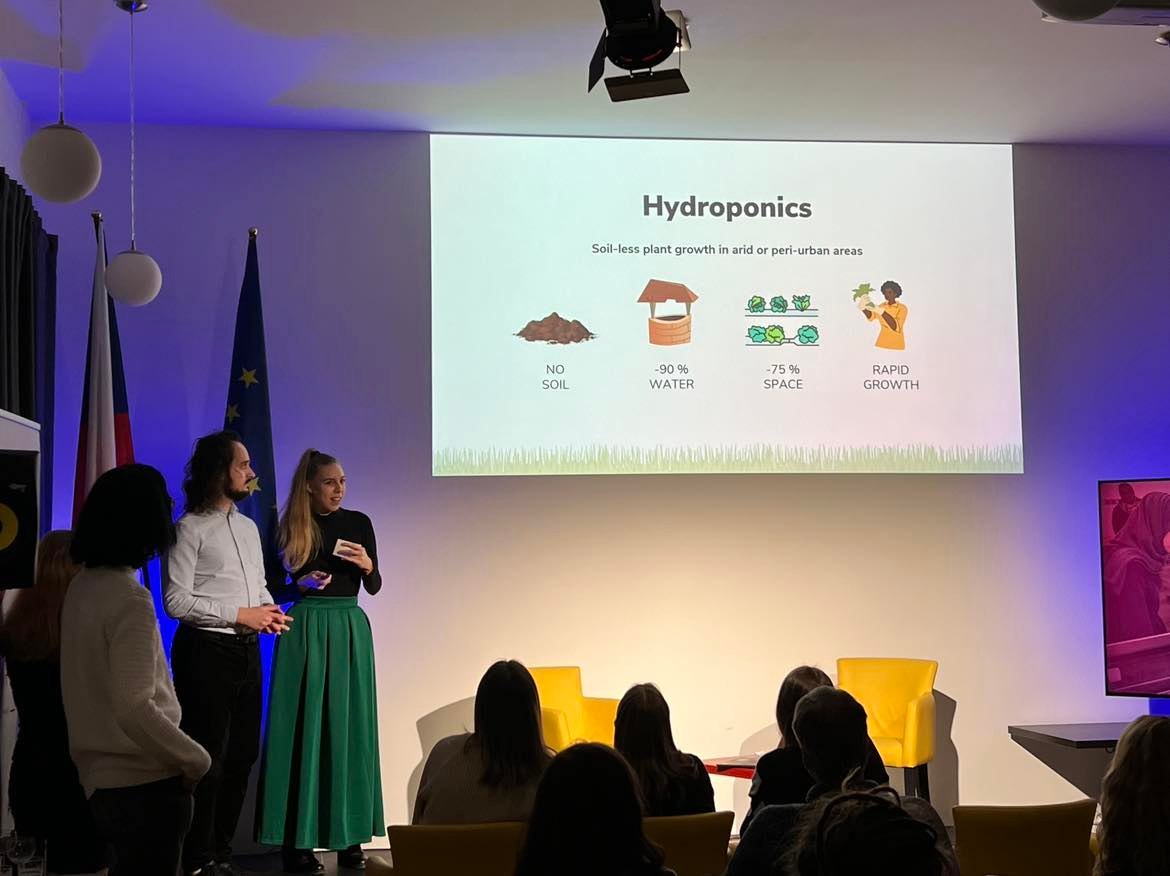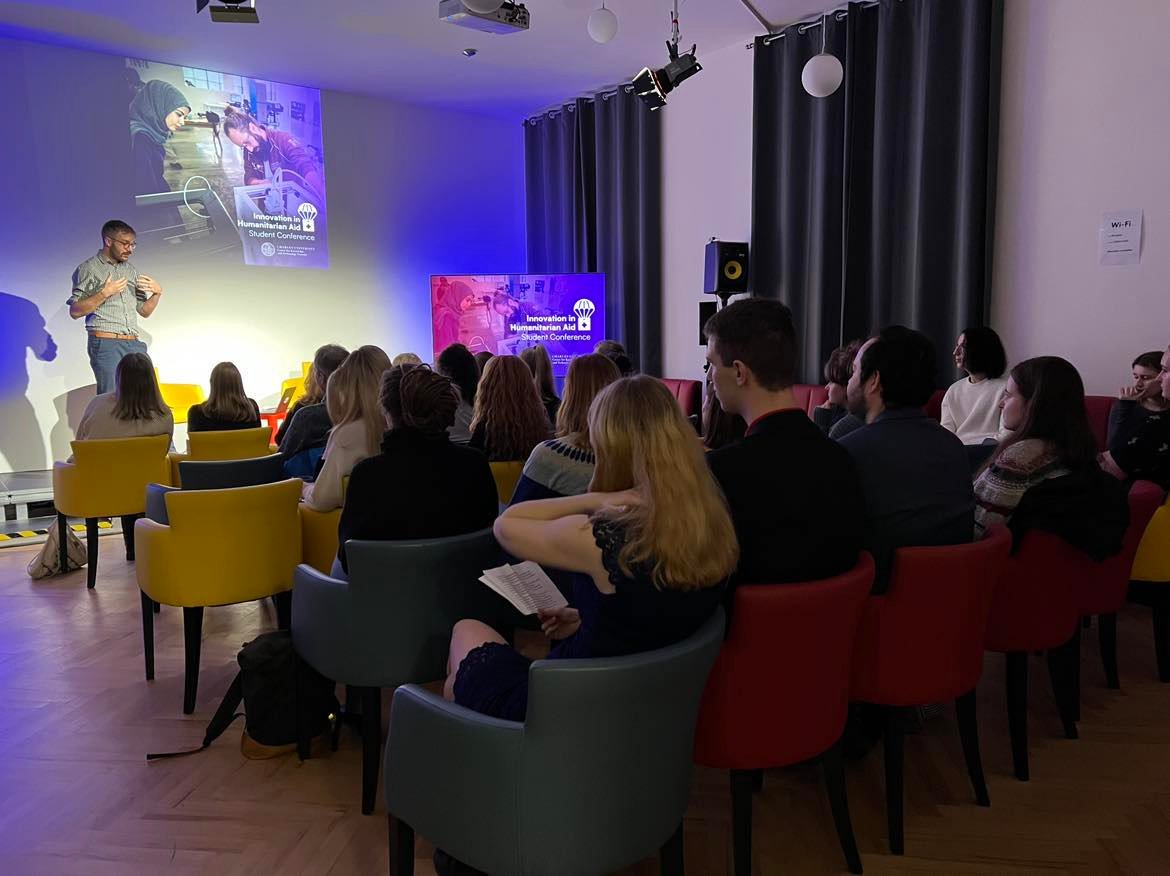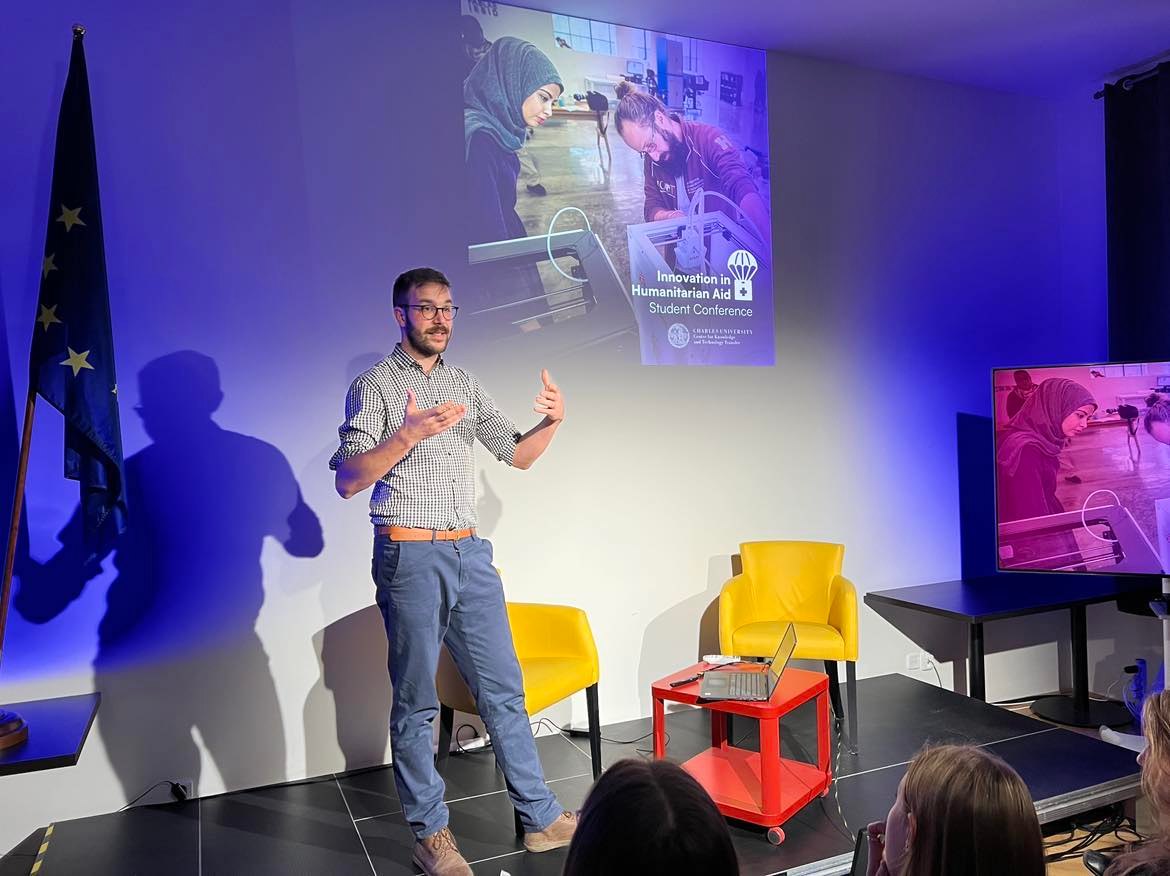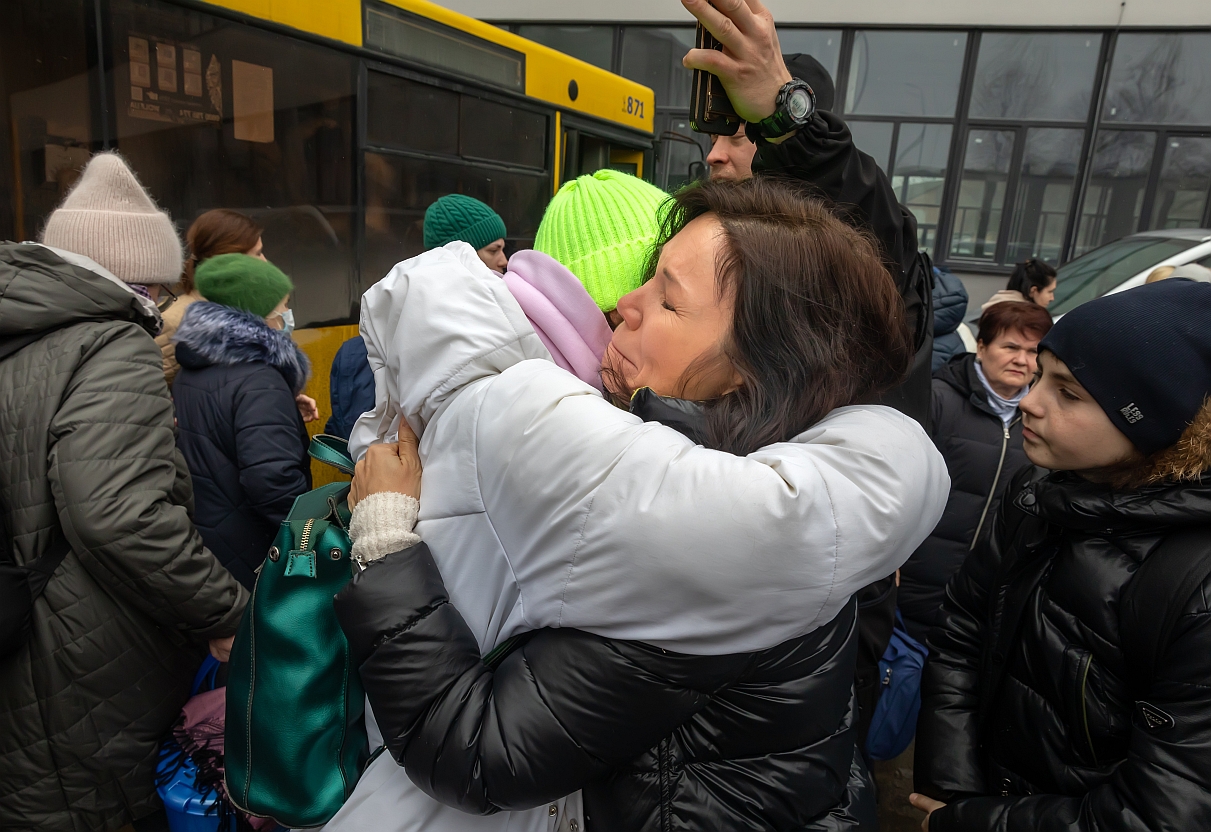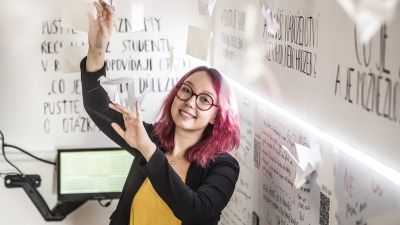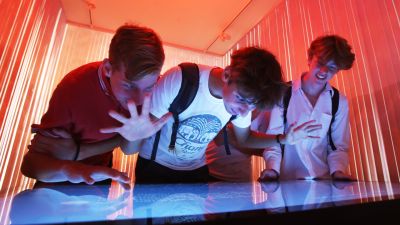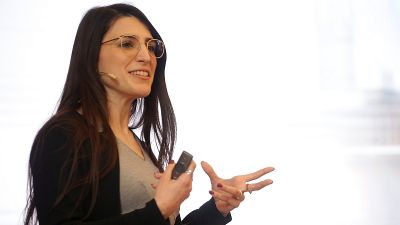The Centre for Knowledge and Technology Transfer at CU brings together experts and students from different faculties and fields. Interdisciplinary approaches can inspire new solutions in practice. Last week, the centre hosted an event capping a successful new course - in its first inception or test or pilot run - called Innovation in Humanitarian Aid. Forum was there.
By now most students know that Kampus Hybernská, as we have reported in the past, is an exciting multipurpose space that brings people together and promotes novel and effective thinking across fields, from mathematics and philosophy and art to the humanities. The Kampus, in its flagship A building, hosted a student conference which capped a new pilot course taught by Jan Böhm of Doctors Without Borders.
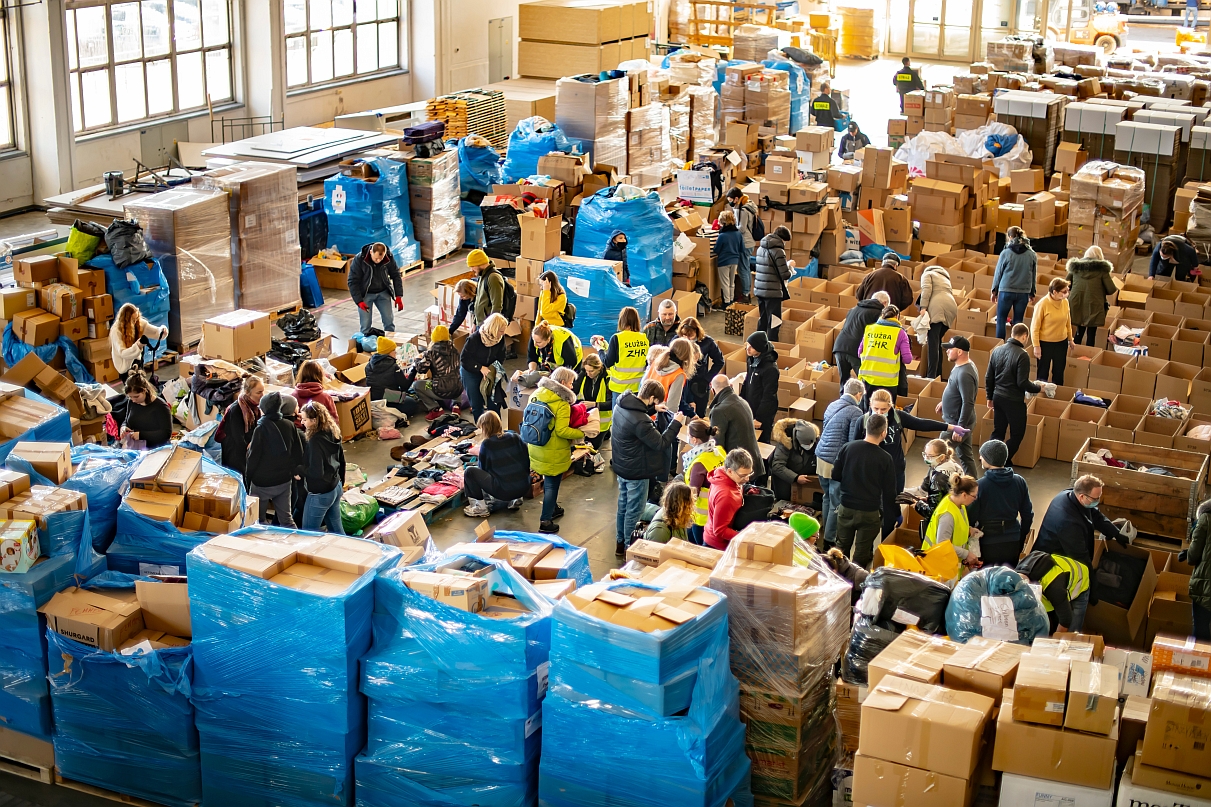
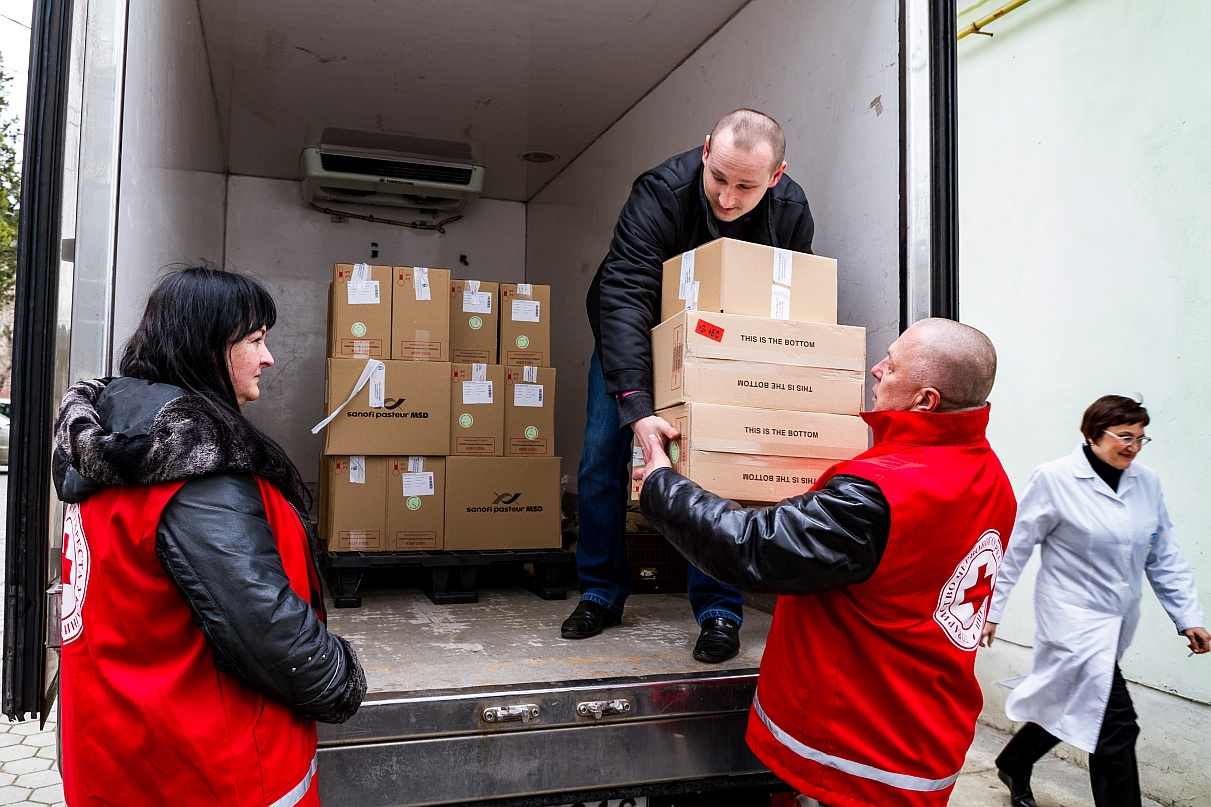
Humanitarian aid in practice: Innovation is increasing quickly but new ideas - from apps to other technology - need to be carefully tested.
Titled Innovation in Humanitarian Aid, the course aimed to get students to think critically about innovation in the sector. Not least because of potential unforeseen negative effects when all aspects of a project are not carefully weighed and sufficiently test-driven before being put into practice. Effects that might have been anticipated if a broader or more rigorous approach had been applied. Jan Böhm explains that it all starts by bringing people from diverse fields of study to the table.
“The main thing I wanted to encourage was to the need to create a dialogue: we need people, in all different fields, to understand what the big picture and the context of humanitarian aid is. As well as innovation in humanitarian aid. Therefore, it is beneficial for future doctors, IT developers, anthropologists, to understand the value there is in connecting the dots in the whole humanitarian space. And even if students later go to work in the private or academic sectors, it won’t matter. Because should they feel the need or feel the calling to help at any point in the future, and get involved and contribute to change, they will understand already the need for combining different expertise.”
It seems to me that the generation of students is very much aware of many of today’s problems simply because being online is so much more a part of ordinary daily life… It’s easier to get informed and to hunt sources down.
“Each generation has its own advantages and limits. When it comes to new media and social networks and how it aggregates communication, research that we studied in this course showed that new media creates a risk of creating the impression of emergencies. On social networks such as Twitter, trends can develop very fast and they can spread very quickly but they can also disappear just as quickly as they began. In fact, the real impact of let’s say a natural disaster becomes clear over a very long period of time. Years after it happened. But usually Twitter trends only last days or weeks; so what is important is to combine different views.
“Traditional humanitarian workers understand the context and to keep a cool head and their feet on the ground even during growing waves of support. Because the real issues will grow apparent only after a few months and years. On the other hand, there is a huge potential in immediate waves of support and if someone knows how to harness that kind of wave, they can translate it into something that will have a lasting effect. Even long into the future.
“And that brings us back to the idea of dialogue: you need to combine different views and I would like to avoid the kind of thinking that only [old hands] in humanitarian aid see the way the world is and that younger participants see only social media trends. Combining different views is the way to go.”
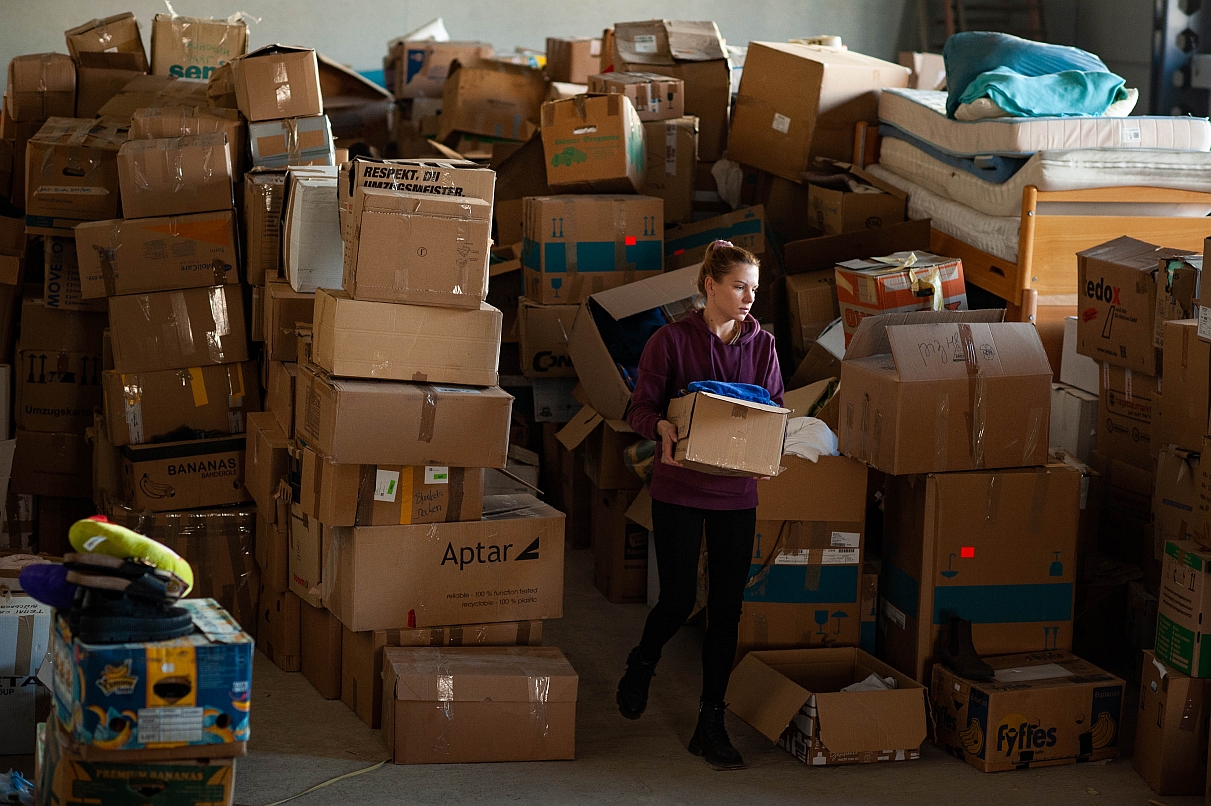
Aid for Ukraine. it will soon be one year that Russian forces invaded the sovereign country.
During the course, which was taught in English, students focused on four areas, dissecting trends and existing projects and innovation critically in humanitarian projects in agriculture, climate change, help for refugees, and innovation and gender. Four groups during the evening presented their findings, a summary to underline material covered in the pilot course. The public presentation and public speaking aspects - now part and parcel of science popularisation and project promotion - were part of the challenge. Once again, communication is essential.
Forum spoke to some of the participants afterwards, asking what had inspired them to take the course:
“My name is Aneta, I am studying Theatre Studies at the Faculty of Arts, and l met my friend Martina last year when we went to Ireland under the Erasmus programme. There, I took a module on migration, we met there and that is [why we were interested in this]. I actually work in a related area, which is corporate immigration.”
“I am Martina and I am studying sociology at the Faculty of Social Sciences at Charles University. Basically, we had this voluntary module called The Human Experience of Migration and I became interested in this course. I thought it could be a great opportunity to learn something more. Sociology and social anthropology are quite connected to these issues: you have sociology of migration and displaced people and so on. I thought it could a great opportunity to connect to my studies and felt it could be a potential area for future research. I like social topics and even though I am not directly involved in humanitarian aid directly as a volunteer, I can see more and more that it could play a role both academically and professionally in my future. That is what I need to figure out.”
“My name is Tom, I doing a Master’s degree in New Media at the Faculty of Arts. I was interested in this class because I had taken courses offered by the centre before: I did one about AI that was online last year. I am close to completing my degree after three years so I have little time and I thought to myself this might be the last opportunity to take a cool class like this before I am employed fulltime. The other thing is that I studied with Jan Böhm, he was a fellow student not that long ago, but is extremely interesting and my thought was, if he is starting a course, I wanted to be the first to sign up! I was very happy with it and hope he does more in the future: I would try to attend even as a former student! He brings an amazing student energy to the course: he finished his degree in June or September and began teaching in October! Only a couple months to transition from student to teacher and he didn’t forget what it’s like to be a student. He was also there to learn, to learn with us.”
That is something he confirmed and that is a great aspect. What about you? You were part of the team focusing on innovation and agriculture: did you enjoy yourself on the stage?
“It’s kind of a doubled-edged sword for me: I used to be really bad at presentations, freezing for a moment on stage or forgetting something I wanted to say! I am a little better at it now, I think. I do still get stressed. The difference is that I have since found there is now some enjoyment underneath. We had an opportunity to present three times during the course, so it was good experience. Even today I was a little nervous, but once you can get the people in the audience to laugh a little, you know you are doing something right.”
